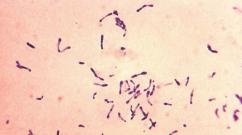Who rules the ocean of predators. Dangerous and bloodthirsty predators of the oceans
photo: John ‘K’
Shark
Perhaps the most dangerous predator of the ocean can be called the white shark: this animal catches up a huge fear on people. Sharks lived in the ocean for many years before humans appeared. About 400 species of these animals are known, but the white shark is considered the most dangerous predator. Its powerful teeth, huge weight - about 3 tons and a length of about 6 meters can terrify anyone. The predator has a spindle-shaped body, large fins and a crescent-shaped tail, lives for about 27 years. There are 300 sharp teeth in the oral cavity, the upper jaw is equipped with triangular teeth, and on the lower jaw they take on a curved shape.
 photo: corwinconnect
photo: corwinconnect
However, humans are not a “delicacy” for these animals, they prefer to attack those inhabitants that have good fat reserves, for example, fur seals and lions. People are not very interesting for white sharks: they have a lot of muscle tissue and tendons. Shark attacks on humans occur for two reasons:
a person walks in the water, and the predator takes him for an easy prey - a sick animal;
the silhouette of a man floating on a surfboard resembles the outlines of other inhabitants of the ocean. Since sharks have poor eyesight, they can mistake the swimmer for simple prey. To make sure that the prey is edible, the predator makes a test bite or is limited by a powerful push, but it can also tear the prey to pieces.
 photo: Venson Kuchipudi
photo: Venson Kuchipudi
It is difficult to predict how the white shark will behave. Having caught prey, the shark shakes its head in different directions, which helps it tear the prey to pieces.
Scientists believe that thanks to this animal, the Pacific Ocean is the cleanest, since the shark eats the weakest creatures.
Anemones
These organisms belong to the class of eaters, a distinctive feature of which is the presence of stinging cells used to defend against predators and to attack. Anemones lead a sedentary lifestyle, their length reaches 1 meter in height.
 photo: Achim
photo: Achim
These predators attach to the bottom with a special foot called the basal disc or sole. The tentacles of anemones, the number of which varies from a dozen to a hundred, contain special cells called cnidocytes. These cells secrete a poison, consisting of a mixture of toxins, intended for hunting and self-defense. The poison contains substances that affect the nervous system: they paralyze the prey, which allows the predator to pull it closer to the mouth. With the help of the venom of anemones, fish and crustaceans, which make up their main diet, are immobilized.
For humans, the poison of stinging cells is not life-threatening, but it can cause soreness and burns.
Killer whales
These predators belong to the dolphin family, but do not have all the benevolent traits of these animals. Their nickname is the killer whale, they eat almost all the inhabitants of the oceans: mollusks, fish, mammals. If food is enough for them, then killer whales exist quite peacefully with other cetaceans. But if the killer whale gets hungry, both the whale and the penguin can become food for it.
 photo: Nick Johnson
photo: Nick Johnson
The size of the victim does not really matter: if it is a large animal, killer whales can attack with the whole herd. But, when it is impossible to kill the victim in one fell swoop, killer whales can starve it out, biting off a small piece from the body. No one is safe from the attack of killer whales - neither small herring nor large dolphin.
A flock of these animals works in a strictly debugged mode: when they notice a victim, they become very "silent".
 photo: Sean
photo: Sean
They move in even ranks, like soldiers, and each individual has its own task. If a flock of killer whales leads a sedentary lifestyle, fish or crustaceans are quite suitable for feeding them. A migratory flock of killer whales can feed large mammals such as seals and sea lions. They fully justify their nickname - "killer whales".
These are representatives of the order of cephalopods. Octopuses have excellent sense of smell, sight and touch, but they do not hear very well. Octopuses are mobile animals that, with the help of tentacles, grab a victim and immobilize it with the help of a paralyzing poison. Crabs and lobsters most often become their prey: with the help of their tool, they split their shell and reach the body of the victim. For humans, octopus poison is also dangerous, there are problems with speech, breathing and swallowing. If help does not arrive in time, it can lead to death.
 photo: Neptune Canada
photo: Neptune Canada
Octopuses are quite cunning creatures: when the enemy attacks, they seem to throw back their tentacles. The thrown back organ wriggles desperately, and the predator focuses directly on it. At this time, the octopus crawls away safely away.
If you find an error, please select a piece of text and press Ctrl + Enter.
In sedimentary rocks on the coast of Peru, a fragment of a three-meter fossilized skull of a giant sperm whale was found. The find was made in the desert 35 km southwest of the city of Ica (already known to many paleontologists for its artifacts) by paleontologist Klaas Post of the Rotterdam Natural History Museum on the last day of the expedition of a team of paleontologists led by Dr.Christian de Muizon (Christian de Muizon), director of the Natural History Museum in Paris (Natural History Museum in Paris).
The expedition also included paleontologists Olivier Lambert from the Royal Belgian Institute of Natural Sciences, Giovanni di Bianucci from the University of Pisa in Italy, Rodolfo Salas -Gismondi (Rodolfo Salas-Gismondi) and Mario Urbina from the Museum of Natural History of the National University of San Marcos (Lima, Peru) (Museo de Historia Natural, Universidad Nacional Mayor de San Marcos, Lima) and Gilles Reumer from Museum of Natural History of Rotterdam (Rotterdam Natural History Museum).
The fossil was placed in the collection of the Natural History Museum in Lima, Peru.
The researchers, as pioneers, named the species of sperm whales, newly described by them, Leviathan melvillei:
- the first component of the name is the mythological monster Leviathan, mentioned in the Old Testament;
- the second part is given in honor of Herman Melville, author of the novel about the white whale "Moby Dick".
According to the reconstruction carried out by scientists, Leviathan melvillei had a jaw length of three meters, and from the tip of the muzzle to the tail was 16-18 meters.
The most amazing feature of this animal is its huge teeth up to 30 centimeters long and up to 12 centimeters wide. These are the largest teeth that any of the terrestrial predatory animals possessed.
Absolute record holder teeth
Of modern predators, only sperm whales, reaching 20 meters in length, can compare in size with L. melvillei. However, the modern sperm whale has functional teeth only on the lower jaw (on the upper one there are practically no protruding rudimentary ones), and in the ancient leviathan sperm whale both the lower and upper jaw are equally developed. The presence of teeth both above and below suggests a predatory hunting strategy: probably Leviathan melvillei attacked his victim, grabbed with powerful jaws and tore it apart with giant teeth.
Analyzing the details of the skull, and in view of the fact that the jaws of the found animal were equipped with large powerful muscles, scientists suggest that Leviathan melvillei could easily deal with whales up to 7-10 meters long.
At one time and in the same waters, along with Leviathan melvillei, another monster lived - Carcharocles megalodon - a giant shark, reaching 15 meters in. Whether these giants of the predatory world could compete or enter into battles is still unknown to scientists, since there are no facts indicating the meeting of these monsters.
In addition, scientists have to answer the question about the reasons for the disproportionate torso of the animal. This will allow you to study the skeleton of a prehistoric sperm whale.
Initially, it was believed that the large head allows these marine mammals to dive to considerable depths in search of food. But the latest findings refute this theory, since the animals that were hunted by the giant hunters lived in the upper layers of the ocean.
Based on the size of the skull, the researchers argue that the ancient monster whale had a large spermaceti organs, the purpose of which is not unanimous among modern sperm whales.
According to modern concepts, this large cavity in the forehead, filled with a waxy substance - spermacet, helps the whale in several tasks:
- the first (controversial) is the facilitation of diving and ascent due to a sequential change in the density of this substance. It hardens and contracts on contact with cold water and melts from the heat of the blood;
- this cavity, apparently, plays some role in echolocation;
- a large head can serve as a shock weapon in the struggle of males for a female.
Maybe she helped the Leviathan in attacking the prey as well. Such a ram could damage the victim no less than the subsequent capture with strong jaws. At least two 19th century whaling ships were sunk after being hit on the side of the massive head of large male sperm whales. Such cases later formed the basis of the plot of the novel "Moby Dick".
Since the "Leviathan" did not dive deeply after its victims, but preferred to feed near the surface of the sea, it did not need "help in diving".
From this it may follow that such a large organ in the course of the evolution of whales appeared precisely as a sonar and a ram, and long before sperm whales began to make their stunning dives to great depths.
Scientists still cannot answer the question of what led to the extinction Leviathan melvillei, but it is assumed that changes in the environment (cooling), as well as in the number and size of available prey, could be to blame.
Lambert is sure: Leviathan melvillei is the largest sperm whale known to science. His descendants grinded, lost their teeth, and instead of actively hunting mammals, they switched to absorbing mollusks such as squid.
Sperm whales, which feed on deep-sea squid today, are much less vulnerable to climate change than active predators living near the surface of the water. Modern sperm whales specialize in a completely different food niche: they are excellent divers hunting deep-sea squid. And the teeth of sperm whales for capturing squid are not particularly needed.
This was not at all the case with Leviathan melvillei, he knew perfectly well how to use such an impressive weapon. Well, millions of years after the disappearance of the monster, the vacant niche of an aggressive predator was filled with killer whales - killer whales, significantly inferior to the Leviathan in size, but using similar hunting tactics.
And there are two more important findings of recent years concerning the evolution of whales.
Last year, the remains of two whales of the group Archaeoceti of the species Maiacetus inuus, about 48 million years old, were found in Pakistan. Analysis of the fossilized skeletons of a male and a pregnant female showed that female primitive whales gave birth on the ground. In addition, their find provided new data to determine how the whales migrated from land to water. Scientists believe that the first land creatures appeared in the Devonian - about 360-380 million years ago. After 300 million years, some species of mammals decided to return back to the water. Their paws began to turn back into fins. The find in Pakistan showed an important link in the evolution of whales. The presence of teeth in the fetus suggests that newborn whales of this species were not completely helpless in their first years of life.
In 2007, a group of American scientists found that the ancestors of modern whales were deer-like creatures without horns and smaller in size. New evidence suggests that the ancestors of whales were artiodactyls, who lived in South Asia about 50 million years ago and hid in the water when danger approached. Previously, it was assumed that the closest relatives of marine mammals are hippos.
An unimaginable event took place about 251 million years ago, which significantly influenced subsequent eras. The name given by scientists to this event sounds like the Permian-Tertiary Extinction, or the Great Extinction.
It became a formative boundary between two geological periods - the Permian and Triassic, or, in other words, between the Paleozoic and Mesozoic. It took a little time for most of the marine and terrestrial species to cease to exist.
These events contributed to the formation of a group of archosaurs on land (the most prominent representatives are dinosaurs) and the so-called. "Sea dinosaurs".
Because it would not be correct to call dinosaurs marine, we put such a phrase as “marine dinosaurs” in quotes and ask you to treat with condescension this “amateurish” definition further in the article (ed.).
Marine reptiles inhabited the water areas of the Mesozoic along with land dinosaurs. They also disappeared at the same time - about 65.5 million years ago. The cause was the Cretaceous-Paleogene extinction.
In this article, we want to acquaint you with a selection of 10 of the brightest and most ferocious representatives of the "sea dinosaurs".

Shastasaurus is a genus of "dinosaurs" that existed more than 200 million years ago - the end of the Triassic period. According to scientists, their habitat was the territory of modern North America and China.
Shastazaur remains have been found in California, British Columbia and the Chinese province of Guizhou.
Shastazaurus belongs to ichthyosaurs - marine predators similar to modern dolphins. Being the largest reptile in the water, individuals could grow to incredible sizes: body length - 21 meters, weight - 20 tons.
But, despite their large size, the Shastazaurs were not entirely terrible predators. They ate by the suction method, and ate mainly fish.

Dakosaurus are saltwater crocodiles that lived more than 100.5 million years ago: Late Jurassic - Early Cretaceous.
The first remains were found in Germany, and later expanded from England to Russia and Argentina.
Dacosaurs were large, carnivorous animals. The maximum body length, both reptilian and fish-like at the same time, did not exceed 6 meters.
Scientists who have studied the structure of the teeth of this species believe that the drakosaurus was the main predator during the period of residence.
Drakosaurs hunted exclusively for large prey.

Thalassomedon - "Dinosaurs" belonging to the pliosaur group. Translated from Greek - "sea lord". Lived 95 million years ago in the North. America.
The body length reached 12.5 meters. Huge fins, which allowed him to swim with incredible speed, could grow up to 2 meters. The size of the skull was 47 cm, and the teeth were about 5 cm. The main diet was fish.
The dominance of these predators persisted until the late Cretaceous, and ceased only with the appearance of the mosasaurs.

Nothosaurus - "sea lizards" that existed in the Triassic period - about 240-210 million years ago. They were found on the territory of Russia, Israel, China, North Africa.
Scientists believe that notosaurs are cousins of pliosaurs, another type of deep-sea predator.
Notosaurs were extremely aggressive predators, and their bodies were up to 4 m long. The limbs were webbed. There were 5 long fingers, intended both for movement on land and for swimming.
The predators' teeth were sharp, outwardly directed. Most likely, notosaurs ate fish and squid. They are believed to have ambushed, using their sleek, reptilian physique to subtly approach food, catching it by surprise.
A complete Notosaurus skeleton is in the Natural History Museum, Berlin.

The sixth place on our list of "marine dinosaurs" is occupied by Tylosaurus.
Tylosaurus - refers to the species of mosasaurs. Large predatory "lizard" that lived in the oceans 88-78 million years ago - the end of the Cretaceous period.
Huge tylosaurs reached 15 meters in length, thus being the dominant predators of their time.
Tylosaurus food was varied: fish, large predatory sharks, small mosasaurs, plesiosaurs, waterfowl.

Thalattoarchon is a marine reptile that existed in the Triassic period - 245 million years ago.
The first remains, discovered in Nevada in 2010, gave scientists a fresh look at the lightning-fast ecosystem recovery after the Great Extinction.
The skeleton that was found - part of the skull, spine, pelvic bones, part of the hind fins - was about the size of a school bus: about 9 m in length.
Talattoarchon was an apex predator, growing up to 8.5 m.

Tanystropheus is a lizard-like reptile that existed 230 - 215 million years ago - the middle Triassic period.
Tanystropheus grew up to 6 meters in length, had a 3.5-meter elongated and mobile neck.
They were not exclusively aquatic: most likely, they could lead both aquatic and semi-aquatic life, hunting near the coast. Tanystrophies are predators that ate fish and cephalopods.

Liopleurodon are large carnivorous marine reptiles. Lived about 165-155 million years ago - the border of the Middle and Late Jurassic period.
Typical dimensions of liopleurodon are 5-7 meters in length, weight is 1-1.7 tons. It is believed that the most famous large representative was more than 10 meters in length.
Scientists believe that the jaws of these reptiles reached 3 m.
During its period, liopleurodon was considered an apex predator, dominating the food chain.
They hunted from an ambush. They ate cephalopods, ichthyosaurs, plesiosaurs, sharks and other large animals.

Mosasaurus are reptiles of the late Cretaceous period - 70-65 million years ago. Habitat - the territory of modern Western Europe, North America.
The first remains were discovered in 1764 near the Meuse River.
The appearance of a mosasaur is a mixture of a whale, a fish and a crocodile. There were hundreds of sharp teeth.
They preferred to eat fish, cephalopods, turtles and ammonites.
Research by scientists suggests that mosasaurs may be distant relatives of modern monitor lizards and iguanas.

The first place is rightfully taken by the prehistoric shark, which is considered a truly terrible creature.
Carcharocles lived 28.1-3 million ago - the Cenozoic era.
It is one of the largest predators in the history of marine life. It is considered the ancestor of the great white shark - the most terrible and strongest predator today.
The body length reached up to 20 m, and the weight - up to 60 tons.
Megalodons hunted cetaceans and other large aquatic animals.
An interesting fact is that some cryptozoologists believe that this predator could survive to the present time. But, fortunately, other than the found huge 15-centimeter teeth, there is no other evidence.
Some of the largest creatures that have ever inhabited this world lived millions of years ago. Below are ten of the largest, most fearsome sea monsters that once roamed the oceans:
10. Shastasaurus
Ichthyosaurs were marine predators that looked like modern dolphins and could reach enormous sizes, they lived in the Triassic period about 200 million years ago.
Shastazaurus, the largest marine reptile ever found, was an ichthyosaur that could grow to over 20 meters. It was much longer than most other predators. But one of the largest creatures to ever swim in the sea was not exactly a fearsome predator; Shastazaurus ate by suction, and ate mainly fish.
9. Dakosaurus
Dacosaurus was first discovered in Germany, and with a strange reptilian and fishy body, it was one of the main predators at sea during the Jurassic period.
His fossils have been found over a very wide area - they have been found everywhere, from England to Russia to Argentina. Although it is commonly compared to modern crocodiles, Dacosaurus could be 5 meters long. His unique teeth have led scientists to believe that he was a prime predator during his terrible reign.
8. Thalassomedon
Thalassomedon belonged to the Pliosaur group, and its name is translated from Greek as "Sea Lord" - and for good reason. Thalassomedons were huge predators, reaching up to 12 meters in length.
He had almost 2 meter fins, which allowed him to swim in depths with deadly efficiency. His reign as a predator lasted until the late Cretaceous period, until it finally came to an end when new, larger predators such as the Mosasaurs appeared in the sea.
7. Nothosaurus
The Notosaurs, which were only 4 meters long, were aggressive predators. They were armed with a mouthful of sharp, outwardly directed teeth, indicating that their diet consisted of squid and fish. It is believed that the Notosaurs were primarily ambush predators. They used their sleek, reptilian physique to sneak up on prey and take it by surprise when attacking.
The Notosaurs are believed to be related to pliosaurs, another type of deep sea predator. The data obtained from the fossil remains indicate that they lived in the Triassic period about 200 million years ago.
6. Tylosaurus
Tylosaurus belonged to the Mosasaur species. It was enormous in size, reaching over 15 meters in length.
Tylosaurus was a meat-eater with a very varied diet. Traces of fish, sharks, smaller mosasaurs, plesiosaurs, and even some flightless birds have been found in their stomachs. They lived at the end of the Cretaceous in a sea that spanned what is now North America, where they sat tightly at the top of the marine food chain for several million years.
5. Talattoarchon Saurophagis
Only recently discovered, Talattoarchon was the size of a school bus, reaching almost 9 meters in length. It is an early ichthyosaur species that lived during the Triassic period, 244 million years ago. Due to the fact that they appeared shortly after the Permian extinction (the largest mass extinction on Earth, when scientists believe 95% of marine life was destroyed), his discovery gives scientists the opportunity to take a fresh look at the rapid recovery of the ecosystem.
4. Tanystropheus
Although Tanystropheus was not strictly a marine life, its diet consisted mainly of fish, and scientists believe that it spent most of its time in the water. The tanystropheus was a reptile that could reach 6 meters in length and is believed to have lived during the Triassic period about 215 million years ago.
3. Liopleurodon
Liopleurodon was a marine reptile and reached over 6 meters in length. It mainly lived in the seas that covered Europe during the Jurassic period and was one of the best predators of its time. Its jaws alone are believed to have reached over 3 meters - roughly equal to the distance from floor to ceiling.
With such huge teeth, it is not difficult to understand why Liopleurodon dominated the food chain.
2. Mosasaurus
If Liopleurodon was huge, then Mosasaurus was colossal.
Fossil evidence suggests that the Mosasaurus could grow up to 15 meters in length, making it one of the largest marine predators of the Cretaceous period. The Mosasaur's head was similar to that of a crocodile, armed with hundreds of razor-sharp teeth that could kill even the most heavily defended opponents.
1. Megalodon
One of the largest predators in marine history and one of the largest sharks ever recorded, the Megalodons were incredibly scary creatures.
Megalodons roamed the depths of the oceans during the Cenozoic era, 28 to 1.5 million years ago, and were a much larger version of the great white shark, the most feared and powerful predator in the oceans today. But while the maximum length that modern great white sharks can reach is 6 meters, Megalodons could grow up to 20 meters in length, which means they were larger than a school bus!













